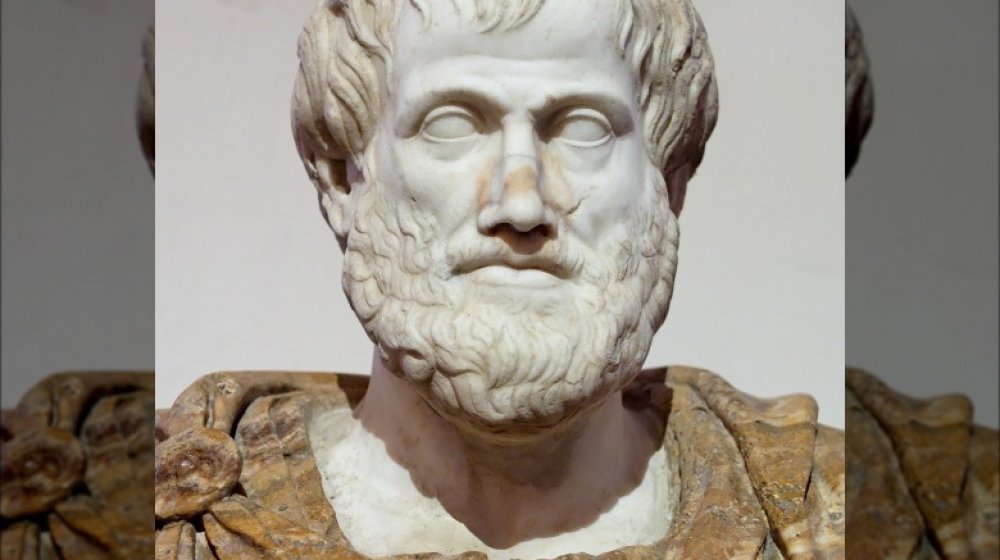How The Ancient Greeks Figured Out The World Was Round
According to the BBC, "We have known that Earth is round for over 2,000 years." However, that claim comes with a flat asterisk. IFLScience writes that prior to the rise of states, flat Earth theory flourished in different forms. Ancient Egyptians, Greeks, and Mesopotamians pictured Earth as a disc surrounded by water while the ancient Chinese believed in a flat, square Earth with spherical heavens. Meanwhile Norse culture envisioned a flat, circular Earth encircled by serpents. Per the American Physical Society, around 500 B.C., the Greek philosopher Pythagoras proposed that the world was round. By the 4th century BC, the round Earth theory was the belle of the ball, thanks to various arguments by Greek thinkers.
However, in the millennia that followed different individuals and groups disagreed with the Greeks. According to the Florida Museum, in 1498, a series of inconsistent navigational readings drove Christopher Columbus to conclude that, contrary to the claims of Pythagoras, the world was boob-shaped rather than ball-shaped. LiveScience observes that in 1893, South Dakota real estate developer Orlando Ferguson played the role of biblical cartographer, producing a map of a flat Earth with an "inverse toroid," basically an indentation shaped as if someone pressed a donut into wet cement. The ascension of the flat Earth Society in the 20th century made it clear that the round Earth's biggest rival refused to be wiped off the map. While modern physics and satellite imagery side firmly with the Greeks, you might wonder how they arrived at the not-always-accepted wisdom of modern science.
A rounding era
As recounted by the American Physical Society, Pythagoras and his Greek brethren "believed the sphere was the most perfect shape," so while he rejected the flat Earth theory, he was all for flattering Earth. In the 4th century BC, Aristotle asserted the world was round based on several compelling observations. When you travel between latitudes, you see different constellations in the sky. Also, that ships vanish hull-first when sailing over the horizon. And finally, during lunar eclipses the Earth casts a round shadow.
In the 3rd century BC, Eratosthenes added math to the mix. He noticed that during the summer solstice the sun over Syene, Egypt lit the bottom of a well without casting a shadow. Yet in Alexandria, Egypt, a stick cast a shadow at an angle of 7.2 degrees relative to Syene. Noting that this amounted to about 1/50 of a circle, he used the distance between Syene and Alexandria to estimate the planet's circumference.

